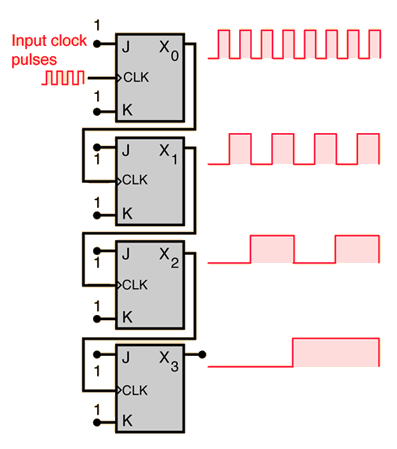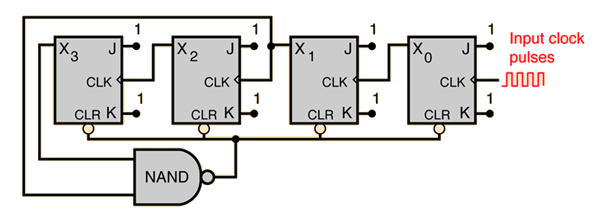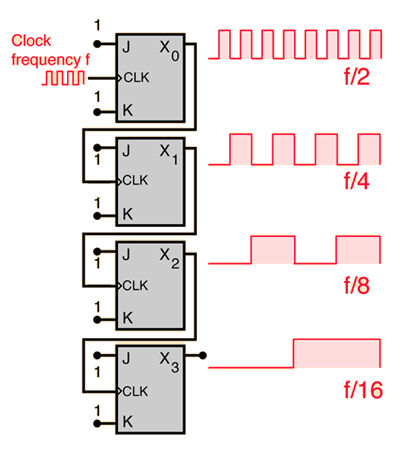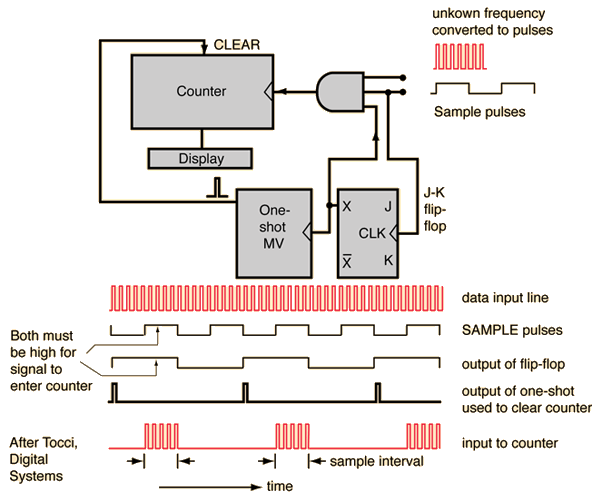Binary CountingA binary counter can be constructed from J-K flip-flops by taking the output of one cell to the clock input of the next. The J and K inputs of each flip-flop are set to 1 to produce a toggle at each cycle of the clock input. For each two toggles of the first cell, a toggle is produced in the second cell, and so on down to the fourth cell. This produces a binary number equal to the number of cycles of the input clock signal. This device is sometimes called a "ripple through" counter. The same device is useful as a frequency divider.
|
 |
| Flip-Flops |
Electronics concepts
Digital circuits
Data Transfer
J-K Flip-Flop Applications
Reference
Tocci
Digital Systems, Sec 5-19
| HyperPhysics*****Electricity and magnetism | R Nave |


